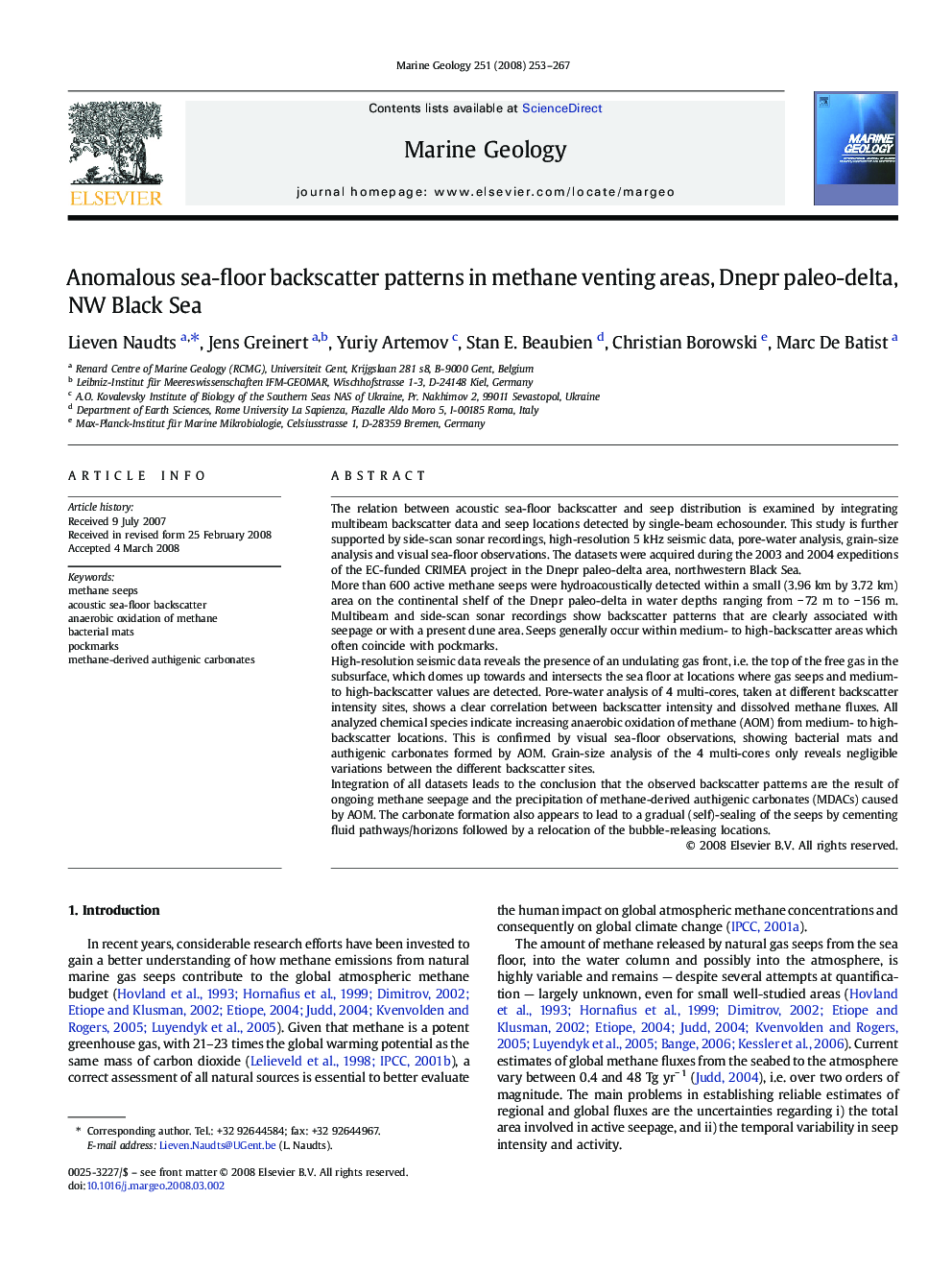| کد مقاله | کد نشریه | سال انتشار | مقاله انگلیسی | نسخه تمام متن |
|---|---|---|---|---|
| 4719398 | 1639179 | 2008 | 15 صفحه PDF | دانلود رایگان |

The relation between acoustic sea-floor backscatter and seep distribution is examined by integrating multibeam backscatter data and seep locations detected by single-beam echosounder. This study is further supported by side-scan sonar recordings, high-resolution 5 kHz seismic data, pore-water analysis, grain-size analysis and visual sea-floor observations. The datasets were acquired during the 2003 and 2004 expeditions of the EC-funded CRIMEA project in the Dnepr paleo-delta area, northwestern Black Sea.More than 600 active methane seeps were hydroacoustically detected within a small (3.96 km by 3.72 km) area on the continental shelf of the Dnepr paleo-delta in water depths ranging from − 72 m to − 156 m. Multibeam and side-scan sonar recordings show backscatter patterns that are clearly associated with seepage or with a present dune area. Seeps generally occur within medium- to high-backscatter areas which often coincide with pockmarks.High-resolution seismic data reveals the presence of an undulating gas front, i.e. the top of the free gas in the subsurface, which domes up towards and intersects the sea floor at locations where gas seeps and medium- to high-backscatter values are detected. Pore-water analysis of 4 multi-cores, taken at different backscatter intensity sites, shows a clear correlation between backscatter intensity and dissolved methane fluxes. All analyzed chemical species indicate increasing anaerobic oxidation of methane (AOM) from medium- to high-backscatter locations. This is confirmed by visual sea-floor observations, showing bacterial mats and authigenic carbonates formed by AOM. Grain-size analysis of the 4 multi-cores only reveals negligible variations between the different backscatter sites.Integration of all datasets leads to the conclusion that the observed backscatter patterns are the result of ongoing methane seepage and the precipitation of methane-derived authigenic carbonates (MDACs) caused by AOM. The carbonate formation also appears to lead to a gradual (self)-sealing of the seeps by cementing fluid pathways/horizons followed by a relocation of the bubble-releasing locations.
Journal: Marine Geology - Volume 251, Issues 3–4, 6 June 2008, Pages 253–267